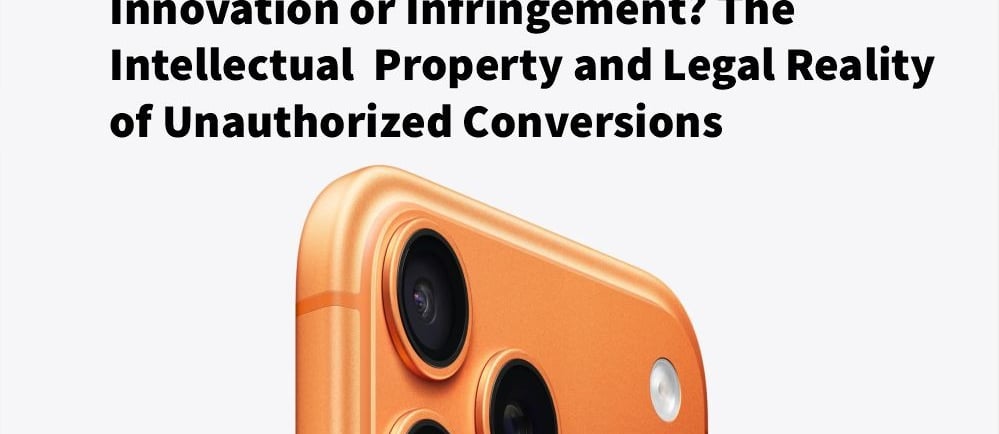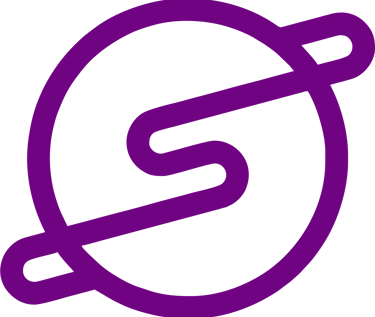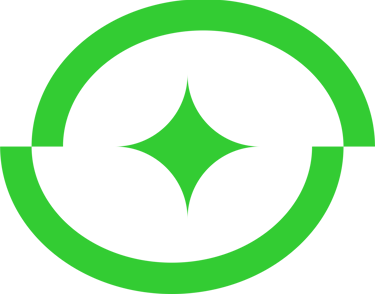From iPhone XR to iPhone 17 Pro Max: Innovation or Infringement? The Intellectual Property and Legal Reality of Unauthorized Conversions
Blog post description.
Optimist Ibukun
10/17/20255 min read


From iPhone XR to iPhone 17 Pro Max: Innovation or Infringement? The Intellectual Property and Legal Reality of Unauthorized Conversions
Introduction
In recent months, the internet has been flooded with videos and offers showing how an iPhone XR can be “converted” or “upgraded” into the latest iPhone 17 Pro Max—often through software modifications and hardware tweaks. Many of these offers claim to source devices directly from China at a low cost, supposedly helping consumers avoid what they describe as “extortion” from retailers in Nigeria and other countries.
While this trend might seem attractive to consumers seeking the prestige of owning the latest iPhone model without spending millions of naira, the legal implications are far-reaching. Beyond the economic effects on Apple and legitimate retailers, there are serious intellectual property (IP) and consumer protection concerns that must be examined.
This article explores these issues through the lens of Intellectual Property Law—highlighting how such conversions may amount to multiple forms of IP infringement under Nigerian, U.S., Chinese, and international (WIPO) law.
Understanding Intellectual Property Protection in iPhone 17 Pro Max
Intellectual Property Law exists primarily to protect the economic and moral rights of creators and innovators. Apple Inc. is one of the world’s most active IP holders, securing comprehensive protection for every new product before launch.
The iPhone 17 Pro Max is protected under several categories of IP:
Trademark Protection
Apple’s trademarks protect identifiers such as:
I. The name “iPhone”, “iPhone 17 Pro Max”, and Apple’s bitten apple logo.
Taglines such as “Ceramic Shield” or “Fusion Camera”.
These are registered marks globally under the Madrid Protocol (administered by WIPO), and also locally in the United States, China, and Nigeria (under the Trademarks Act, Cap T13, LFN 2004).
2. Copyright Protection
Apple’s iOS 18/19/26 operating system, interface icons, sounds, animations, and even wallpapers are protected under copyright law as original literary and artistic works.
Reproducing or modifying these without authorization violates:
I. Section 15 of the Nigerian Copyright Act 2022,
Title 17 of the U.S. Code (Copyright Act), and
China’s Copyright Law (2020 Amendment).
3. Industrial Design Rights
The shape, finish, and camera layout (“camera plateau”) of the iPhone 17 Pro Max are protected by industrial design rights, covering the non-functional aesthetic features.
Under Part II of the Nigerian Patents and Designs Act, and China’s Patent Law (Design Patent provisions), copying these features without permission constitutes design infringement.
Apple’s proprietary technologies—such as the A19 Pro chip architecture, camera sensors, and image processing pipelines—are likely covered by utility patents. These patents prevent unauthorized use, reproduction, or reverse-engineering of Apple’s technology.
5. Trade Secrets
Apple also protects certain confidential elements—such as camera algorithms, optical systems, and noise-reduction software—under trade secret laws, notably under the U.S. Defend Trade Secrets Act (2016) and similar provisions in Chinese law.
Together, these protections form a comprehensive IP fortress safeguarding Apple’s innovation and commercial interest globally.
The Conversion Practice: iPhone XR to iPhone 17 Pro Max
The “conversion” process typically involves modifying an iPhone XR to mimic the look, software interface, and branding of the iPhone 17 Pro Max. This can include:
Installing unauthorized firmware versions mimicking iOS 26,
Physically altering the casing to resemble the newer model,
Rebranding or remarketing the phone under Apple’s trademarked name.
Legal Implications
This practice is not a harmless customization. It constitutes IP infringement under multiple grounds:
Trademark Infringement: Rebranding a device as “iPhone 17 Pro Max” without authorization misleads consumers and dilutes Apple’s brand identity. This is a violation of Section 5 of Nigeria’s Trademarks Act, Lanham Act (U.S.), and Article 57 of China’s Trademark Law.
Copyright Infringement: Installing or distributing modified Apple firmware (unauthorized iOS versions) breaches Apple’s copyright and software license agreements.
Industrial Design & Patent Violation:
Copying the iPhone 17 design or hardware configurations violates Apple’s industrial design and patent rights, particularly when done commercially.Trade Secret Misuse: If the conversion uses or discloses confidential Apple schematics or software reverse-engineering, it may also breach trade secret protection under international law.
Applicable Legal Frameworks
1. International Law (WIPO)
Apple’s IP rights are enforceable globally through the World Intellectual Property Organization (WIPO).
Under:
The Paris Convention (1883) for industrial property,
The Berne Convention (1886) for copyright, and
The TRIPS Agreement (1994) under the WTO,
member countries—including Nigeria, China, and the United States—must protect Apple’s IP rights within their jurisdictions.
2. Nigerian Law
I. Copyright Act 2022 (Sections 27–32): prohibits unauthorized reproduction, distribution, or adaptation of copyrighted works.
Trademarks Act (Cap T13, LFN 2004): criminalizes unauthorized use of registered marks.
Patents and Designs Act: protects industrial design and invention originality.
Violations can attract civil liability (damages, injunctions) and criminal penalties, including imprisonment and fines.
3. U.S. Law
Apple’s home jurisdiction provides strong remedies under:
Title 17 USC (Copyright Act),
Lanham Act (Trademark Law), and
Patent Act (35 U.S.C.).
Apple frequently sues counterfeiters and modifiers under these provisions.
4. Chinese Law
Although much of this conversion originates in China, Chinese IP Law (2020–2021 revisions) imposes strict penalties for:
Counterfeiting registered trademarks,
Manufacturing or exporting infringing products,
Reverse-engineering patented technology.
China, as a WIPO member, enforces these under the State Intellectual Property Office (CNIPA).
Liability Analysis
A. The Company Converting the iPhone XR
Such a company directly infringes Apple’s IP by:
Using Apple’s registered marks without authorization,
Modifying firmware (copyrighted work),
Copying design and technical components (industrial design & patent infringement).
Under Nigerian law and WIPO conventions, this is an actionable civil and criminal offense.
B. Individuals Marketing the Converted Devices
Promoting or selling converted devices constitutes secondary infringement or aiding and abetting infringement.
Even advertising these products can violate Section 36 of Nigeria’s Copyright Act and Article 57 of China’s Trademark Law.
C. End Users
Although end users may not be prosecuted criminally, knowingly purchasing counterfeit or converted devices could lead to:
Loss of warranty and data protection,
Exposure to unsafe and non-compliant devices, and
Civil forfeiture if proven as willful participation in IP infringement.
What Should Be Done
1. Enforcement and Regulation
Nigerian Copyright Commission (NCC), Trademarks, Patents, and Designs Registry, and Standards Organisation of Nigeria (SON) should collaborate to identify and restrict the importation or sale of such converted products.
Apple Inc. can initiate cease and desist notices, border measures, and civil suits.
2. Awareness and Education
IP practitioners, regulators, and the public must be educated on the economic and legal consequences of supporting counterfeit conversions.
Consumers need to know that authenticity and innovation are core values of IP protection.
3. Collaboration Between Jurisdictions
Since many of these conversions originate from China, bilateral cooperation between Nigeria Customs Service and Chinese IP enforcement agencies (CNIPA) is vital to curb illegal exports.
Conclusion
While converting an iPhone XR into an iPhone 17 Pro Max may appear innovative or cost-saving, it raises serious intellectual property violations and economic concerns.
Each iPhone model embodies years of research, design, and technological development protected by international IP laws.
By altering or misrepresenting Apple’s products, these conversion companies undermine the integrity of IP systems, distort the market, and erode trust in legitimate innovation.
The law is clear, unauthorized reproduction, modification, or branding of protected technology is illegal under Nigerian, U.S., Chinese, and WIPO frameworks.
Consumers, creators, and regulators must all play their part in protecting intellectual property—because the true value of innovation lies not in imitation, but in originality.


